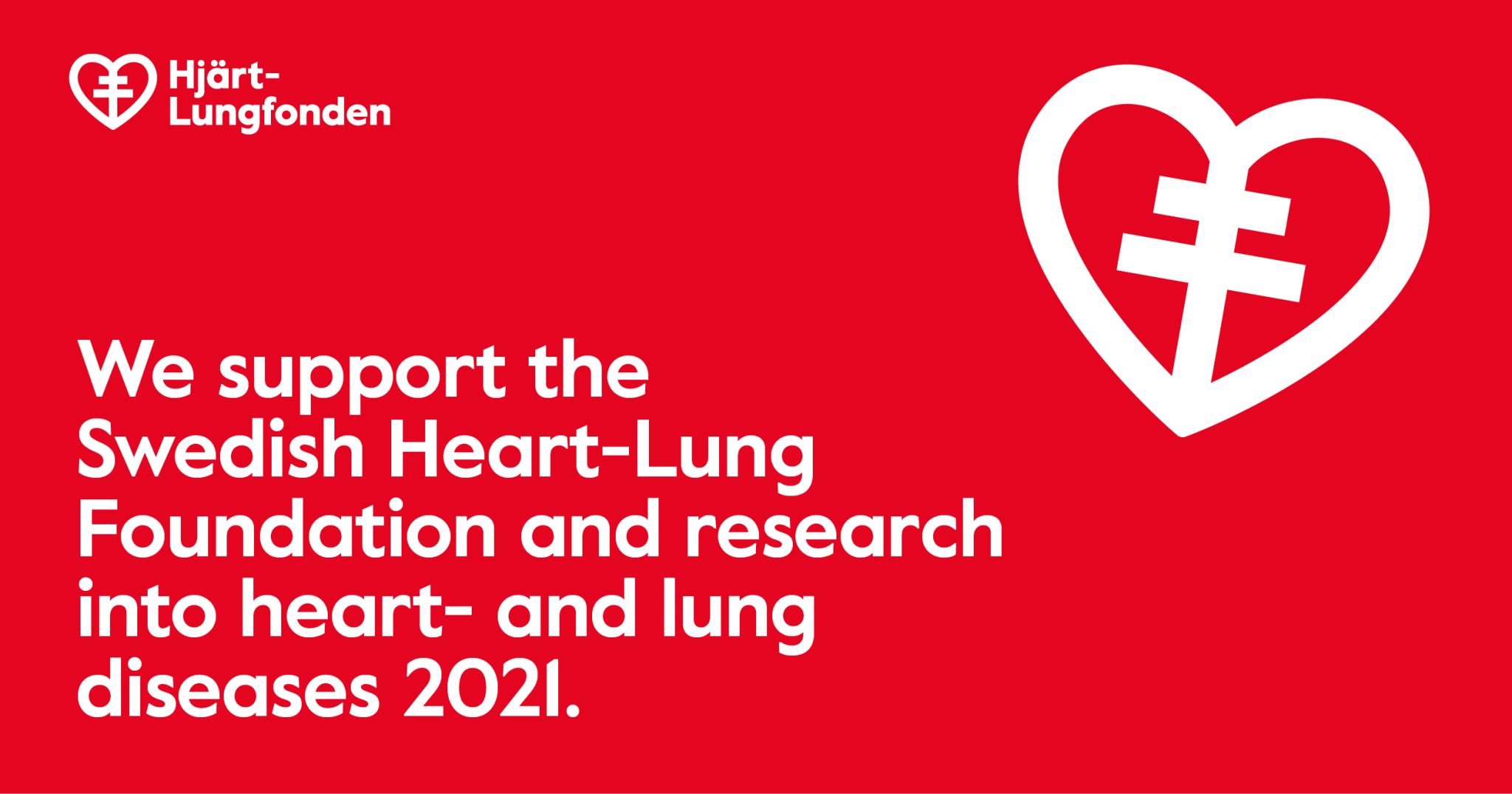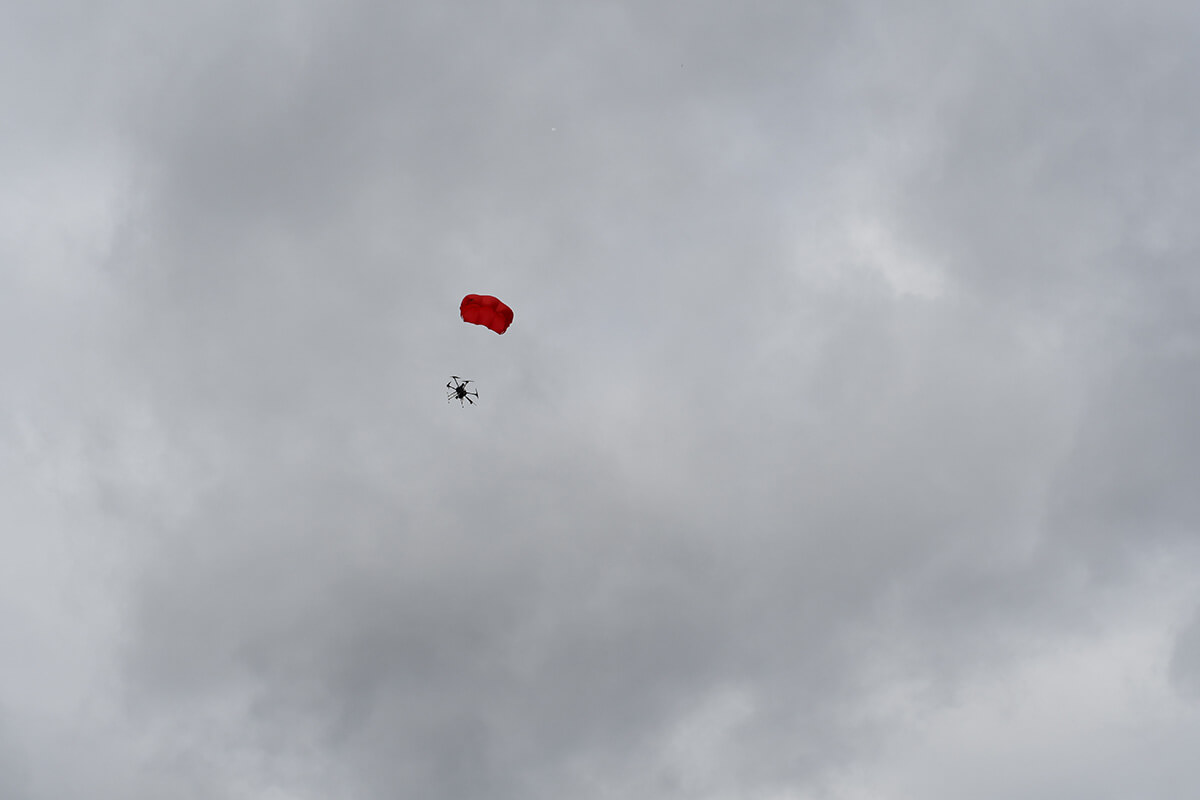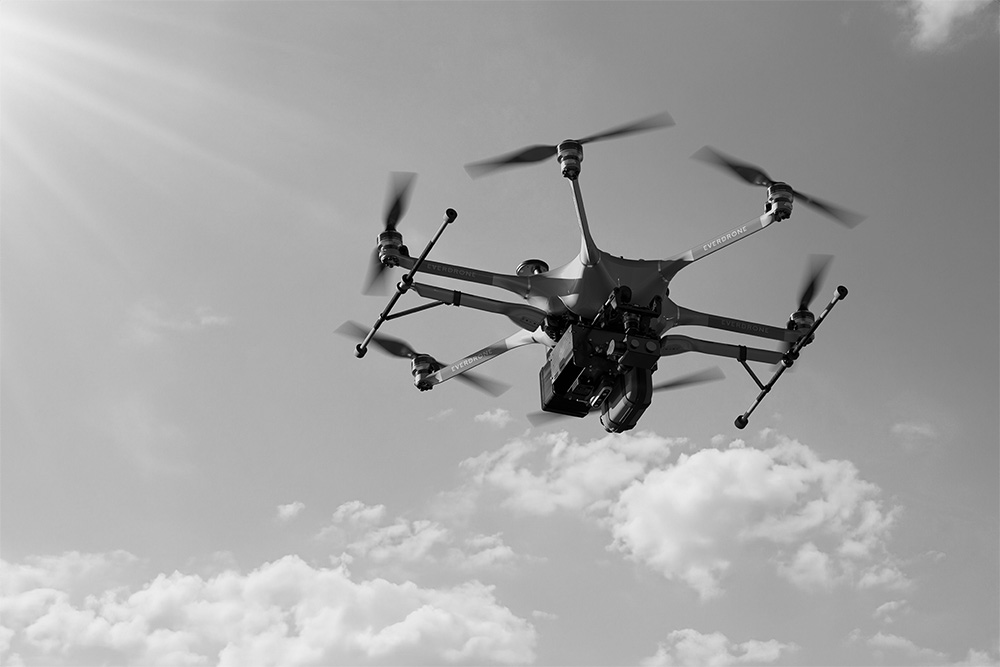Making deliveries in the winter darkness
Developer update 22.12.2021
For every minute saved in getting assistance and an automated external defibrillator (AED) to a person experiencing cardiac arrest, the chance of survival increases by 10%. One of the more complex impediments when delivering during winter periods, is dark nights and the resulting visibility impairments. Everdrone is one of the few companies in the world licensed to fly Beyond Visual Line of Sight (BVLOS) in urban areas in non-daylight conditions.
Winter is here, and with winter comes darkness. The occurrences of cardiac arrests, however, don’t care about the seasons, darkness or impaired visibility.
Still, in every occurrence, the difference between life and death could depend on how fast you get access to a defibrillator. And this is where Everdrone’s Emergency Medical Delivery program – with drone delivery of crucial AED units – comes into play, being able to fly, unimpaired, in complete darkness.
During the Swedish winter period, many people spend most of the dark hours in their homes. This means that should a cardiac arrest emergency occur, there’s a high probability it will occur at home, in the midst of a hard-to-navigate winter darkness.
At Everdrone, safety is at the core of everything we do. Especially when it comes to the Emergency Medical Delivery program, we take every possible precaution to make sure the delivery of AED units is carried out in a secure, safe, and reliable way. To this end, we’ve focused on how to undertake transports in low light and even complete darkness, and this work has been truly successful. In fact, Everdrone is proud to be one of the few companies in the world to be granted a permission for Non-Daylight Operations Beyond Visual Line of Sight in urban environments by a National Aviation Authority (NAA).
Everdrone’s vehicles are equipped with a wide number of features that make nighttime flying safe. Our camera-based Sense and Avoid feature operates just as well during nighttime thanks to laser projectors that are part of the stereo vision system, as does the GPS tracking. Once in the air, the drone is also capable of transmitting images, both in RGB and IR, allowing pilots to monitor flights, no matter the light conditions.
Much like other air traffic, the drone is fitted with position and anti-collision lights, as well as powerful LED spotlights that lights up the delivery site, making it easy to find a safe and reliable drop location. When the drone reaches its destination, the AED is lowered, all the while emitting sound and light markers, making it easy to find for bystanders.
“A large number of cardiac arrests – some 40% – occur during daytime, between the hours of 7 and 15”, says Andreas Claesson, Associate Professor at the Center for Resuscitation Science at Karolinska Institutet, and chair of the Swedish Resuscitation Council.
“However, an additional 37% occur during afternoons and evenings, and an additional 23% during the night. During the Swedish winter months, this latter period is mostly dark, and it’s imperative to be able to deliver defibrillators, no matter the light conditions. The darkness should never be a discriminating factor that impacts a person’s chances for survival.”



